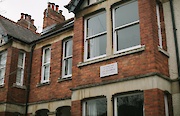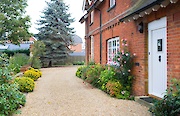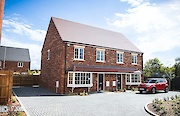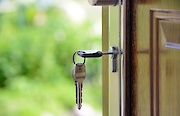


Mortgage Advisor & Director

Mortgage Advisor & Director
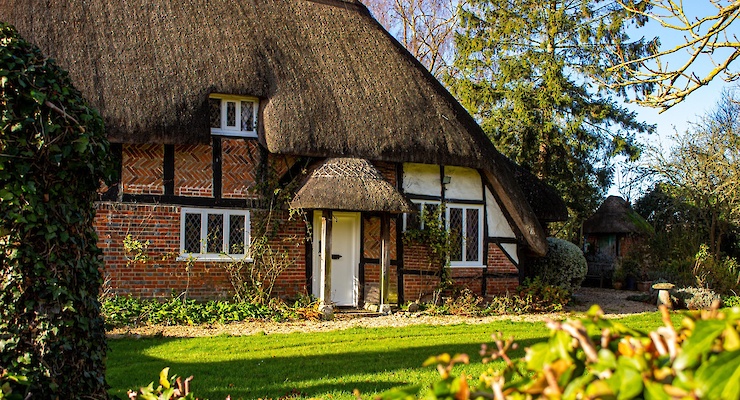
If you’re planning to buy a property built from any materials besides standard brick and mortar, you mightneed a non-standard construction mortgage. Although it works the same as other mortgages, not all lenders provide mortgages on non-standard properties. A non-standard construction mortgage is, therefore, simply a mortgage from a lender whose terms allow them.
We look at which properties might be considered non-standard, how non-standard mortgages can differ, who offers them, and how to get one.
What is a non-standard construction property?
A non-standard construction property could be any number of property types, and actually what is ‘standard’ can vary from one to the next. For example, some lenders are reluctant to consider certain types of flats as opposed to houses.
More broadly, however, non-standard construction tends to refer to homes that have been built using materials other than bricks, such as timber, concrete and steel. It can also refer to buildings that are more difficult to maintain, such as listed buildings or prefab houses.
Can you get a mortgage on one?
Getting a mortgage on non-standard construction properties is perfectly possible, it can just take a little more research. It’s a good idea to speak to a mortgage broker with experience in securing non-standard construction mortgages.
As lenders vary in terms of what they would consider a reasonable risk - for example, some lenders may consider a grade 2 listed building won’t necessarily consider grade 1 - it’s important to seek those lenders most likely to accept the specific property type you’re buying.
It’s worth noting that even where lenders will accept this type of application, they may offer shorter terms and/or higher interest rates to mitigate some of the additional risk, as compared to purchasing a standard brick built house.
They will look at resalability, keeping in mind that people may be more reluctant to buy this type of property due to higher mortgage rates, higher maintenance costs and the tendency for non-standard construction properties to have higher home insurance premiums. The surveys can also be more costly, as a more comprehensive survey is almost always needed.
Types of non-standard construction
Here are some of the more common properties that mortgage lenders are likely to consider non-standard construction:
Listed buildings
There are a number of reasons that, particularly high street, lenders may be reluctant to lend on listed buildings. They usually have restrictive covenants which means that there are certain characteristics that need to be maintained as an ownership responsibility.
This can mean repairs, renovations and maintenance can be difficult and expensive. Grade I listed buildings are typically the most difficult to finance, grade 2* slightly easier and grade 2 listed building mortgage options the most accessible of the three. That said, it can be difficult to get a mortgage for any type of listed building, and most offer a maximum of 90% LTV.
Thatched-roof property
Most mortgage lenders will consider thatched-roof properties, pending surveyor valuation. Those in need of repair are likely to be harder to finance than a well-maintained thatched property.
It’s worth keeping in mind that If a property is both listed and thatched, which they often are, you’re more likely to need a specialist lender. In some cases, high street lenders may accept thatched properties, however, the LTV they offer is typically lower - around 85% LTV whereas you may get 90% with a more specialist lender.
Barn conversion
If you’re buying a barn conversion on farmland and agricultural land you may need to look at commercial, semi-commercial or, depending on the intended use(s). However, if you’re simply buying this as a stand alone residential home, some lenders will offer standard residential mortgages for this. The LTV offered is likely to depend on the construction materials.
Steel-framed
Steel framed houses can be difficult to find lenders for, as they vary quite considerably in terms of build quality. BISF (British Iron and Steel Federation) built properties can be particularly difficult to finance due to known structural problems. It’s by no means impossible to get a mortgage on a steel-framed property, however, you’ll likely need a specialist lender and surveyor. Lending is often capped at a maximum of 50% LTV for this type of home.
Prefab house (modular home)
A prefabricated house can be difficult to finance, as lenders often shy away from them, especially those built pre-war that were made from non-sustainable materials. Newer prefab homes, sometimes referred to as ‘eco homes’ are still considered non-standard construction properties, but due to the more sustainable and durable building materials used, can be easier to finance. Whereas traditional prefab housing is likely to be capped at 50% LTV, for more modern modular homes you may be able to secure up to 85% LTV.
Timber-framed houses
Wooden-framed homes vary in quality, and when the property was built can have a big impact on whether or not lenders will accept your application. Unlike prefab homes, older timber framed homes are sometimes considered more durable, due to hardier building materials and practices that were used in the past. A full structural survey is likely to be required, and this will help the lender to determine whether or not to provide a mortgage. The max LTV will depend on the valuation, but is likely to range from 75-80% LTV.
How to get a mortgage on a non-standard construction property
If you’re looking to make a non-standard construction mortgage application, take some advice from a broker with expertise in this field, such as ourselves. As well as pointing you in the direction of lenders who offer non-standard construction mortgages, they will also have knowledge of the types of surveys that you may need, and how your LTV may be impacted.
A lower LTV (Loan to Value) mortgage may mean that you need a larger deposit in order to meet affordability requirements. Finding the lender willing to provide the highest LTV loan on a non-standard property can, therefore, be the difference between securing a suitable loan and not.

Connect with a non-standard construction mortgage specialist on Teito
Maintenance on non-standard properties
Depending on the characteristics of the non-standard property, the mortgage provider will be concerned about the maintenance and upkeep involved as time goes by.
For example, thatched roofs need totally replacing roughly every forty years, with the roof ridge replenished every ten years. If this essential maintenance was not performed, it would have a severe outcome on the value of the property. The lender is likely to struggle to sell the property in a state of disrepair should it be repossessed.
It may be that you are able to convert your non-standard construction home into a more standard and therefore, more mortgageable property.
Which lenders offer non-standard construction mortgages?
Most lenders will lend on some non-standard construction homes, but which types of construction deemed acceptable can vary from one to the next. For example, Santander, Halifax and Barclays will consider timber-framed property and thatched roof homes but not listed property. HSBC will consider concrete construction homes, but lending is capped at 80% LTV.
The more unusual your property type, the more likely it is that you’ll need a specialist lender or a non-standard construction mortgage. However, as a whole of market brokers, we can help you to find the most suitable lender in any scenario.
Will your maximum borrowing be impacted?
The majority of lenders will limit the maximum LTV of their mortgages for non-standard construction property. That said, opting for a more specialist lender can be less restrictive than using a high street bank.
As detailed above, the type of non-standard construction property you buy can dramatically impact the LTV of your borrowing, so this will vary on a case-by-case basis. Speak to one of our friendly advisers for more guidance.
The maximum mortgage size that you qualify for will also be determined by your annual income, with most lenders willing to offer you a mortgage of 4-4.5 times the amount you earn.
You can use our calculator below to work out how much you can potentially borrow based on this income multiple and some of the higher ones a few lenders offer.
Why choose Teito for your non-standard construction mortgage?
At Teito, we specialise in helping applicants who are looking to purchase non-standard construction homes. We have access to over 90 lenders, many of whom provide mortgages that can be more tailored to your individual needs.
Our team of brokers can provide a broad knowledge of the different types of non-standard construction property, and which lenders are more willing to lend on each. We can also guide you through the complexities of buying this type of home, and ensure you get the best outcome, no matter what type of property you hope to buy.
Get started here to take advantage of a free, no-obligation chat with a broker who specialises in non-standard construction mortgages today.
FAQs
Non-standard construction mortgage rates can be higher than they are for traditional brick and mortar properties due to the increased risk in lending. This can vary dramatically depending on the level of risk involved, and individual lender terms and deals, however, so it’s best to seek advice on costs based on your specific circumstances.
Choosing an Adviser
Selecting a qualified and experienced mortgage adviser is of great importance. To choose a suitable adviser, evaluate their qualifications, experience, and reputation, and ensure they are regulated by the Financial Conduct Authority (FCA).
Read reviews from previous clients and make sure they provide a clear explanation of the products and services they offer, as well as the fees and charges associated with them.



